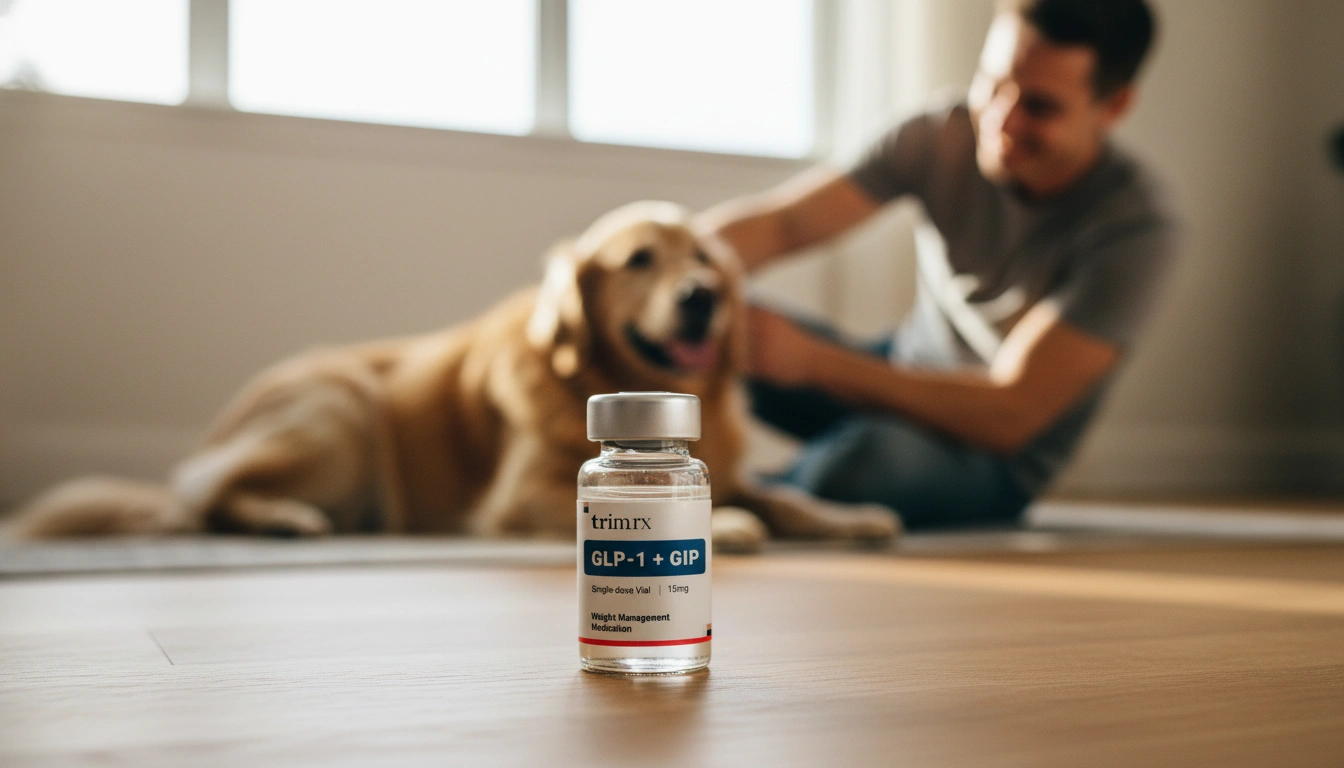When to Increase GLP-1 Dose: A Comprehensive Guide to Optimizing Treatment

Introduction
Did you know that the global prevalence of obesity has nearly tripled since 1975? This staggering statistic highlights the importance of effective weight management strategies, especially for those struggling with obesity and related health conditions. One of the most promising advancements in this field has been the emergence of GLP-1 receptor agonists, powerful medications that not only help regulate blood sugar but also promote weight loss.
As we navigate the complexities of GLP-1 dosing, a critical question arises: When should we increase the GLP-1 dose? Understanding the nuances of GLP-1 dosage adjustments is essential for maximizing benefits while minimizing potential side effects. At TrimRx, we are committed to supporting individuals in their weight loss journeys through personalized and medically supervised care. In this blog, we will explore effective strategies for determining the right time to increase GLP-1 doses, the factors to consider, and how to seamlessly integrate this into your overall weight management plan.
As we delve into this topic, you will learn about the various GLP-1 medications available, the recommended dosing schedules, and the signs that indicate it might be time for an increase. We will also discuss how to work collaboratively with your healthcare provider to ensure that your treatment plan aligns with your individual needs and goals.
Let’s embark on this journey together, as we discuss the intricacies of GLP-1 dosing, aiming for optimal outcomes while embracing a compassionate and supportive approach to weight management.
Understanding GLP-1 Medications
Before we dive into the specifics of dosage adjustments, it’s essential to understand what GLP-1 medications are and how they work. GLP-1, or glucagon-like peptide-1, is a hormone produced in the intestines that plays a vital role in regulating appetite and glucose metabolism. GLP-1 receptor agonists mimic this hormone, providing therapeutic benefits for individuals with type 2 diabetes and obesity.
Common GLP-1 Medications
Several GLP-1 medications are available, each with unique dosing regimes and indications:
- Semaglutide (Ozempic® / Wegovy®): Approved for both diabetes management and chronic weight management, Semaglutide can help achieve significant weight loss when used in conjunction with a calorie-restricted diet and increased physical activity.
- Liraglutide (Saxenda): Primarily used for weight management, Liraglutide is effective in promoting satiety and reducing caloric intake.
- Tirzepatide (Mounjaro®): An innovative medication that acts on multiple receptors, providing unique benefits for weight management and glycemic control.
Mechanism of Action
GLP-1 medications function by several mechanisms:
- Appetite Suppression: These medications enhance feelings of fullness, leading to reduced food intake.
- Slowed Gastric Emptying: By delaying the rate at which food leaves the stomach, GLP-1 medications help maintain satiety.
- Insulin Secretion: They stimulate insulin release in response to meals, helping to regulate blood sugar levels.
Dosing Guidelines
Understanding the dosing guidelines for GLP-1 medications is crucial for achieving optimal outcomes. Typically, these medications are initiated at a lower dose, which is gradually increased based on individual tolerance and therapeutic goals.
Example Dosing Schedule
-
Semaglutide (Wegovy):
- Initial Dose: 0.25 mg once weekly for 4 weeks
- Increase to 0.5 mg once weekly after 4 weeks if tolerated
- Further increases may occur depending on individual response, up to a maximum of 2.4 mg once weekly.
-
Liraglutide (Saxenda):
- Initial Dose: 0.6 mg daily for 1 week
- Increase by 0.6 mg weekly until reaching the maintenance dose of 3 mg daily.
Importance of a Personalized Approach
At TrimRx, we understand that no two individuals are the same. Our personalized weight loss programs are designed to meet the unique needs of each person, ensuring that their treatment plans are effective and sustainable. This individualized approach extends to dosing GLP-1 medications, where we consider factors such as weight loss goals, tolerance, and potential side effects.
Recognizing When to Increase the Dose
Determining the right time to increase your GLP-1 dose requires careful monitoring of several factors. Here are key indicators that it may be time to adjust your dosage:
1. Weight Loss Progress
A common benchmark for weight loss success is aiming for at least 1% of your starting weight lost per month. If your progress stalls—especially after a period of effective weight loss—it might be time to consider increasing your GLP-1 dose.
2. Tolerance of Current Dose
When evaluating whether to increase the dose, we also consider how well you are tolerating your current medication. If you are experiencing minimal side effects such as nausea or gastrointestinal discomfort, it may be appropriate to move to a higher dose.
3. Hunger Levels
Paying attention to your hunger cues is essential. If you find that your appetite has returned and you are struggling with cravings, this could be a signal that the current dose is no longer effective in suppressing hunger.
4. Consultation with Healthcare Provider
Collaboration with your healthcare provider is key to managing your GLP-1 therapy. Regular check-ins allow for an assessment of your progress and any necessary adjustments to your treatment plan.
5. Monitoring Side Effects
As we consider increasing the dose, we must also be mindful of potential side effects. Should any severe adverse effects arise, it may be prudent to remain at the current dose or even decrease it.
The Importance of Gradual Dose Increases
Increasing the dose of GLP-1 medications should always be done cautiously and gradually. Rapid increases can lead to adverse reactions, including nausea and gastrointestinal upset.
For example, when initiating treatment with Semaglutide, the recommended approach is to start at a low dose and increase it gradually, allowing your body to adjust. If you experience side effects at any point, it may be beneficial to hold the dose steady for an extended period before attempting to increase it again.
Working with TrimRx for Your Weight Loss Journey
At TrimRx, we provide a supportive environment where individuals can access personalized care and effective weight loss solutions. Our comprehensive program includes:
-
Free Assessment Quiz: To determine your eligibility for prescription weight loss medications, we encourage you to take our free assessment quiz. This allows us to tailor your treatment plan to meet your specific needs. Take the quiz here.
-
Unlimited Support: We offer ongoing support throughout your weight loss journey. Our team is dedicated to helping you navigate your treatment, from medication management to lifestyle adjustments.
-
Quick-Access Supplements: In addition to prescription medications, we also provide quick-access supplements like GLP-1 Daily Support and Weight Loss Boost. These products can complement your weight loss efforts and enhance your overall wellness. Explore GLP-1 Daily Support and Weight Loss Boost.
Conclusion
Navigating the world of GLP-1 medications can be complex, but understanding when and how to adjust your dose is crucial for achieving your weight loss goals. By recognizing the signs that indicate it may be time to increase your GLP-1 dose and working closely with your healthcare provider, you can optimize your treatment plan for better outcomes.
At TrimRx, we are committed to providing personalized, medically supervised care that empowers you on your weight loss journey. Remember, every individual’s path is unique, and we are here to support you every step of the way.
If you’re ready to take charge of your health and explore personalized weight loss solutions, we invite you to take our free assessment quiz today!
FAQ
What are GLP-1 medications used for?
GLP-1 medications are primarily used to manage type 2 diabetes and support weight loss in individuals with obesity or weight-related conditions.
How do I know if I should increase my GLP-1 dose?
You may consider increasing your GLP-1 dose if you are not experiencing significant weight loss, if your appetite returns, or if you are tolerating your current dose without severe side effects.
What should I do if I experience side effects from GLP-1 medications?
If you experience side effects, it’s important to discuss these with your healthcare provider. They may recommend holding your current dose or adjusting your treatment plan.
How often should I consult my healthcare provider about my GLP-1 regimen?
Regular check-ins are essential to monitor your progress and make necessary adjustments. Aim for consultations every 4-8 weeks, or as recommended by your provider.
Can I purchase quick-access supplements without taking the assessment quiz?
Yes, our quick-access supplements like GLP-1 Daily Support and Weight Loss Boost are available for immediate purchase to support your weight loss journey.
By following these guidelines and maintaining an open dialogue with your healthcare provider, you can effectively manage your GLP-1 therapy and work towards your weight loss goals with confidence.

Transforming Lives, One Step at a Time
Keep reading
Vitamin B12 and GLP-1 Medications: What to Know
GLP-1 medications can lower B12 absorption and intake; learn symptoms, food sources, supplement options, and how to monitor levels.
Semaglutide Injection Site Reactions: What To Know
Learn why semaglutide injections can cause redness, swelling or nodules, how to prevent and treat them, and when to seek medical care.
TrimRx vs Friday’s
Compare TrimRx and Friday’s telehealth GLP-1 weight-loss programs: pricing, medical support, coaching, delivery, and which fits your needs.



